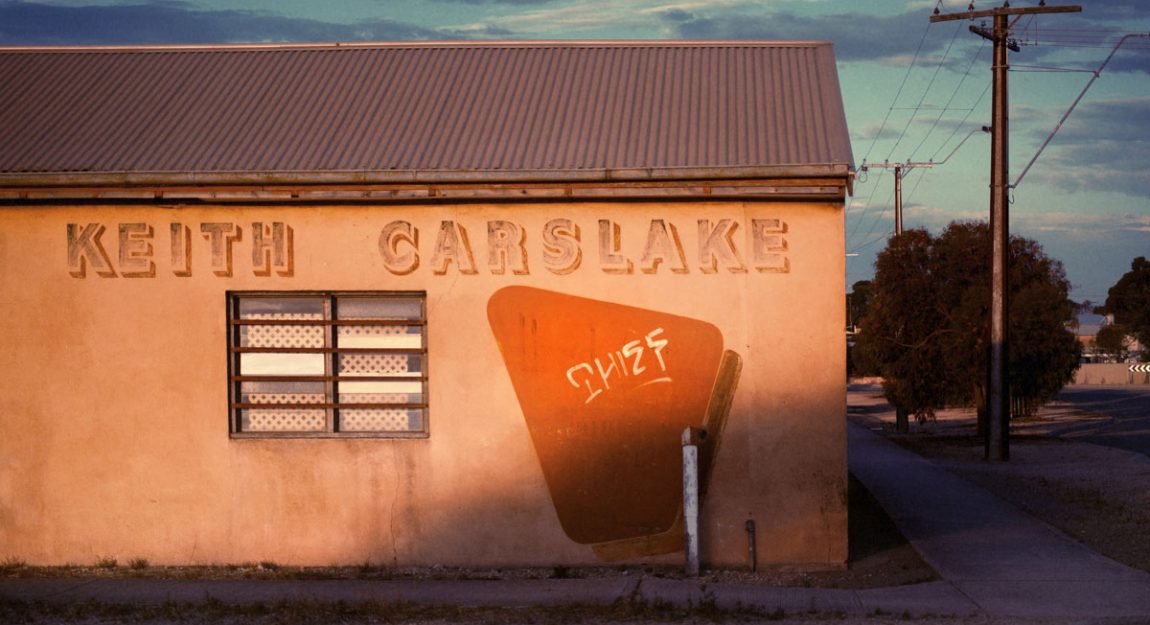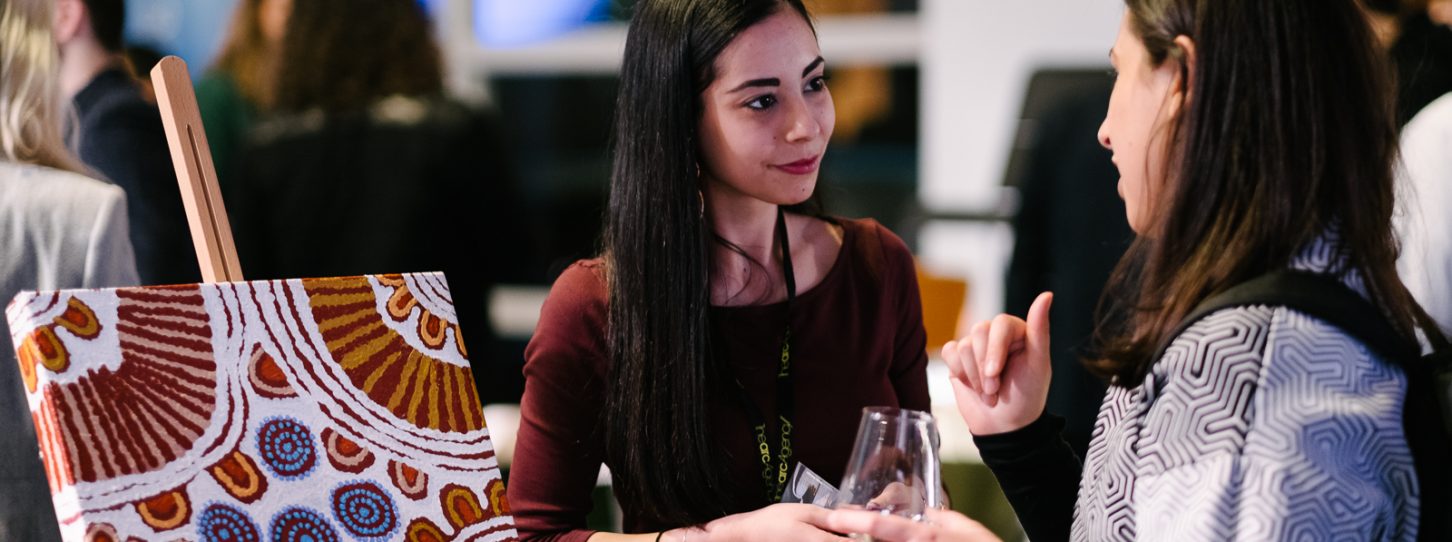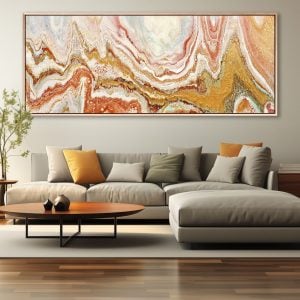Q&A with Photography Legend Alex Frayne
Photographer Alex Frayne is a bit of an Aussie legend. Having been a finalist in many notable awards, including the National Portrait Prize and Head On Festival, he’s been building his reputation consistently over the last few years. With 2 books published and another on the way, Alex’s work is a popular take on the beauty of the banal and ordinary existence. We were lucky enough to catch up with Alex and ask him all the things we’ve been dying to ask. From his favourite locations and photographers, to his rejection of the word banal, get a glimpse into Alex’s artistic practice in our Q&A below.
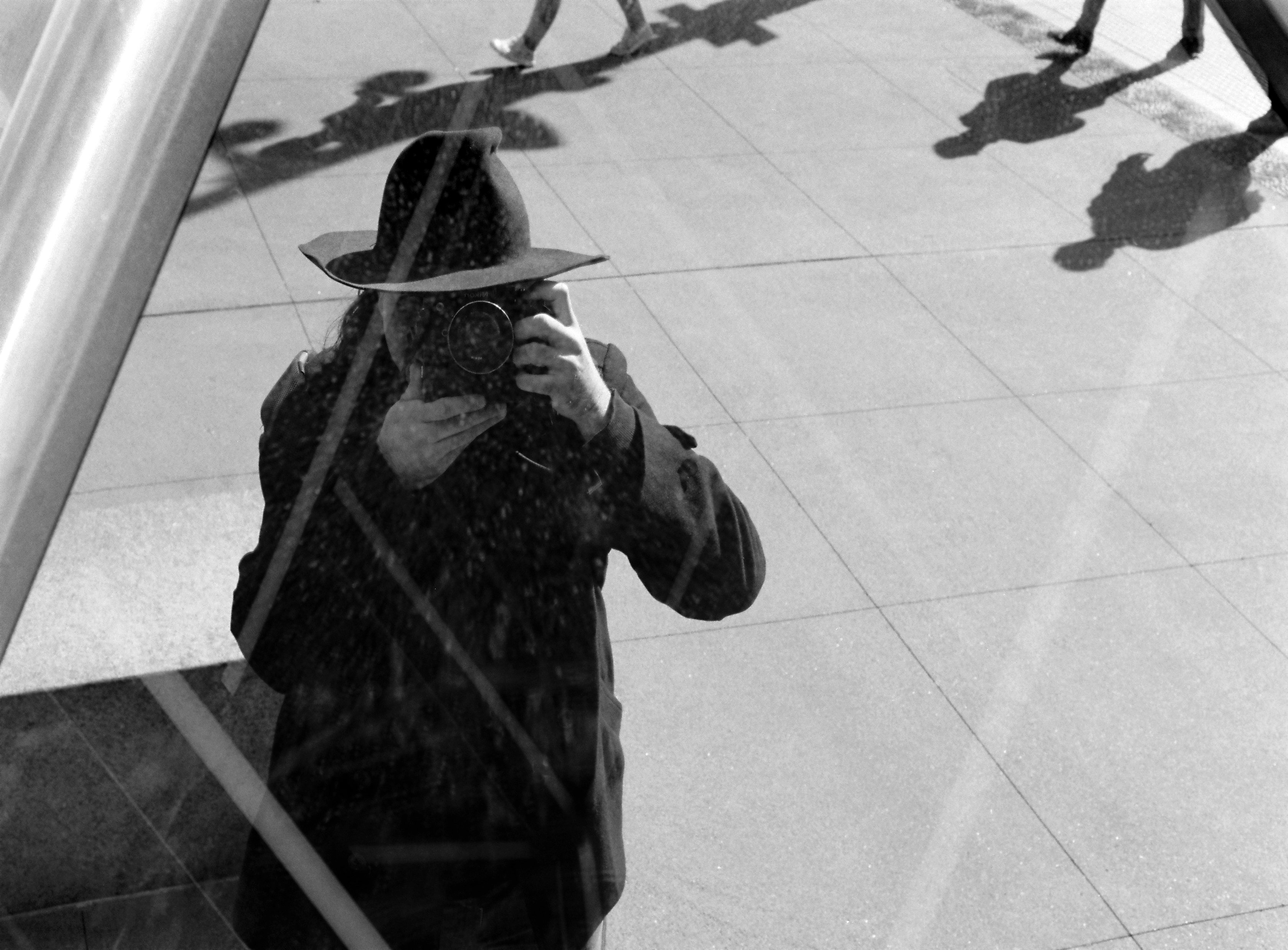
Alex Frayne taking a selfie.
When did you first pick up a camera?
My mum bought me an 8mm camera when I was eleven and I started shooting movies which in general starred me and my friends and family members.
From then, how did you get to where you are now?
I did a B.A at Flinders University which included cinema theory and prac as well as the traditional classical literature and drama stuff. I surrounded myself with like-minded individuals, formed a small company, shot short films and then after university embarked on an independent feature film.
The process towards stills photography was one of osmosis. I felt about ten years ago that stills photography was the zeitgeist art form of my era, and at that point my work became more well-known and collected by individuals who I knew through film. The transition to stills as my primary art form was complete.
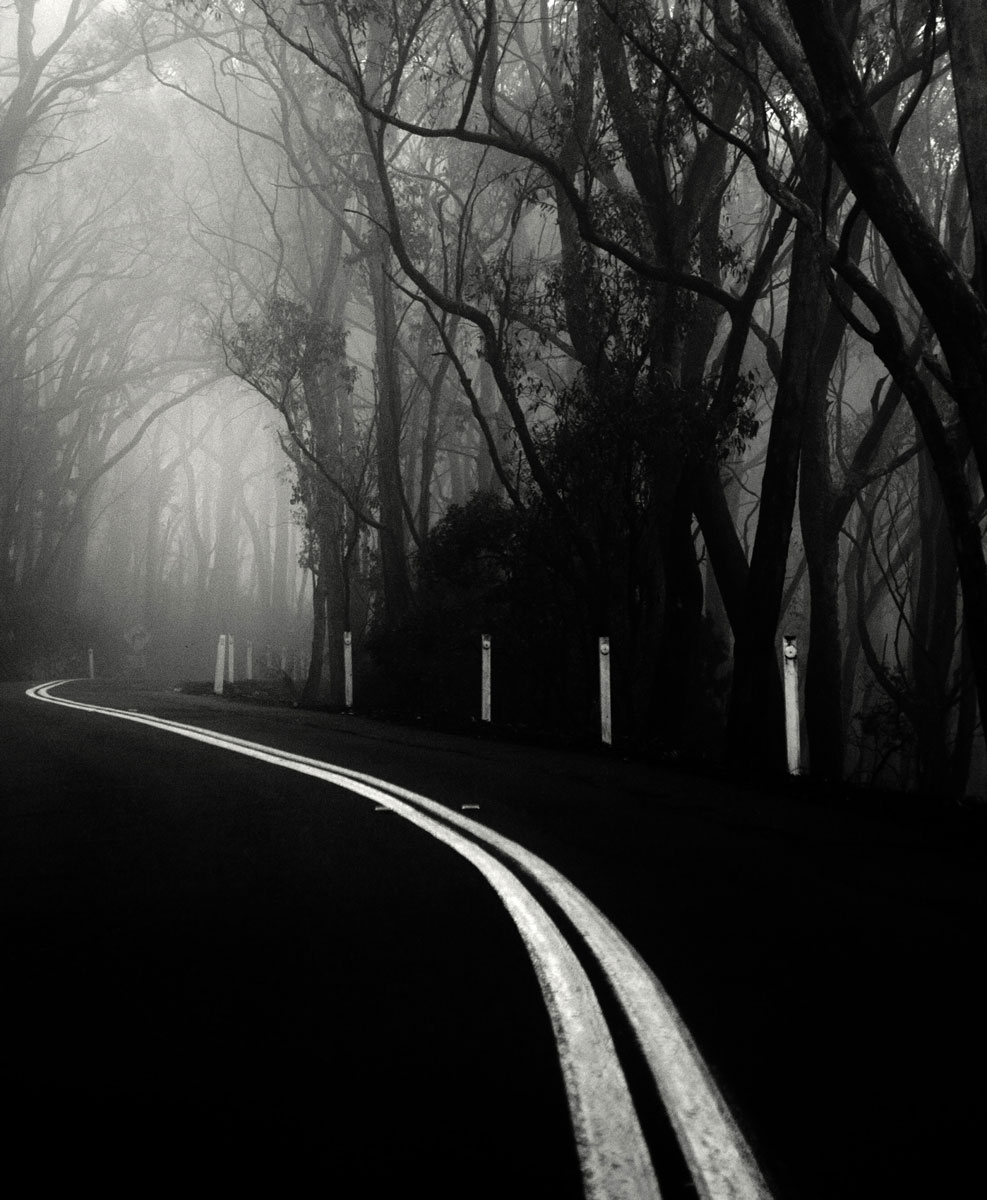
Road Games by Alex Frayne
Where does the inspiration for your work come from?
The inspiration for my work comes from a deep seated desire to affect change no matter how small or large in the world around me.
What do you find attractive about using film? What is the decision making process in choosing a film to use?
Film has a depth. Film has an insight which I can’t seem to achieve in the same way with digital. This has a lot to do with the technicalities of the chemical nature of film. But for me it’s an emotional invitation. When I shoot on film I’m inviting a viewer to see the world in a way which I find aesthetically pleasing. I am by no means a film ‘Evangelist’ but one of the benefits of being able to make a living out of my art is that I can afford the extra expense that film incurs.
What draws you to photograph the banal?
One person’s banal is another person’s gold mine. I never see anything photographically as banal, I see everything with potential. My curiosity towards any object is increased when I look through the viewfinder and at that point I see the world in a completely different way.
Banality is a social construct, if you can free yourself of the constraints that that word entails you will see the world in a completely new light. Everything, even the so called banal will have a shimmer, an energy and a residue which is open to your photographic proposition.
Do you have a favourite location to shoot?
The world is my favourite location. I travel overseas regularly and am constantly awed by the diverse array of people and place for my lens. But in terms of a favourite local location, it would be the Mallee in South Australia. I’m shooting an ongoing series of images of that region in all its glorious flatness and optimism. Bereft of high rainfall, the Mallee is a place of constant photographic richness and also a source of Depression Era bleakness and 21st century technology. What a mix!
What is it about a scene that catches your eye?
Traditionally photographers are taught to engage with light, composition, the frame and what I would call from my old screen studies, elements of ‘mise en scéne’ i.e. what fills the scene. For me the most important things are mood and tone. Once I detect a certain mood or tone in a photographic composition I’m alert to the potential of the work because for me photography has to have an emotional underpinning and two of the most primal emotional reactions people can have to a work are through mood and tone.
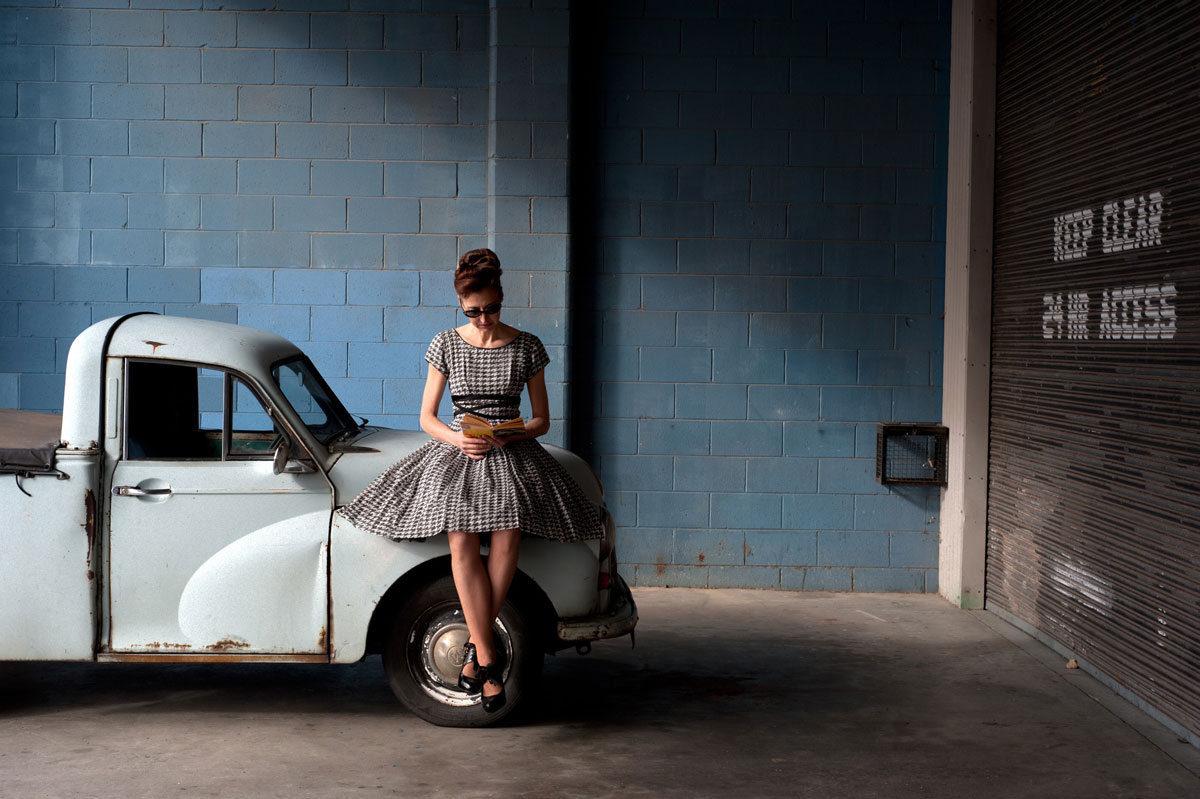
For The Love of Houndstooth by Alex Frayne
What, in your opinion, makes a good photograph?
Almost as a reflex action I think of the word message, though message seems too prescriptive. I’m not into messages, although my series Overseers of Streets has been running for a year or more now: this series aims to bring powerful images of homeless people onto the feeds of the well off, meaning, I suppose, that there is a strong element of social awareness being dealt out and this will inevitably provide a message.
With my other work, now represented in two books, it’s less about message and more about power. That is, the power of the image regardless of its relationship to societal trends, movements, or hashtags. I’m less interested in message and more interested in mood, tone, scale, joy, melancholia, old fashioned stuff like that.
How has your journey as a photographer changed? Did you start doing one style of photography and evolve? Or have you always worked the way you do?
Well it changes every day. It changes depending on what element of my various projects need attention. A famous Chinese philosopher once said ‘the highest goal you can acquire is to have no goal’. So I approach my work with a very open mind, receptive to what interests me and what makes me curious.
A couple of years ago, Wakefield Press published a book called The Theatre of Life, which was basically a compendium of street portraits. That work has taken me into new projects instigated by people who saw that book. I’ve worked with the Anti-Poverty Network (SA) on their It’s Time campaign, I’ve worked with the No String Attached Disability Theatre and I’ve just completed a major commission for Flinders University for the International students. Those all happened because of the book.

Tank by Alex Frayne
What do you love most about being an artist?
Creation. The freedom it gives me, the pleasure it gives others, the engagement on a social level, the engagement with the world around me. The feeling that I can change the world around me through what I do.
Do you have any photographers or other artists you look up to?
My style has its pedigree in cinema, as that comprised my formative years as a student of screen studies. So I have a keen sense of mise en scéne and montage and this is underpinned with the realization that while cinema is not stills, the two forms have common ancestry in tropes of lighting, framing, mood, tone and drama.
So it comes as no surprise that I reference or at least derive a style more in common with film makers rather that other still photographers. I like Pressburger, Roeg, Eastwood, Malick and many, many others, including the stills photographer Diane Arbus and Vivienne Meyer, despite the canon of works before me though, I rarely think of these pioneers nowadays. Really, I’m just keen to instigate unique work that people can recognise; I don’t give two hoots about past greats.
What are your goals or dreams for the next 12 months (such as exhibiting in a gallery or being featured in a particular publication)?
My goals are always the same. To improve, to strive for excellence, to see beauty around me, to engage with the world in order to execute my agendas onto film.
What would your advice to art collectors be for purchasing photography?
Undoubtedly the best way to see artwork is in the physical sense. That means that collectors who see a plethora of images online should actually buy work, so that they can actually see it, physically, three dimensionally, with all its depth and scope.
See Alex Frayne’s Bluethumb portfolio here.

